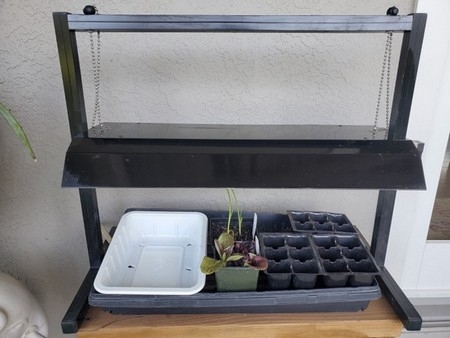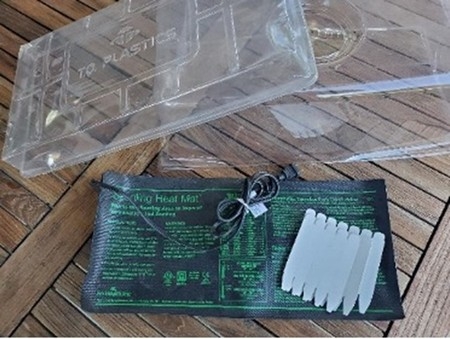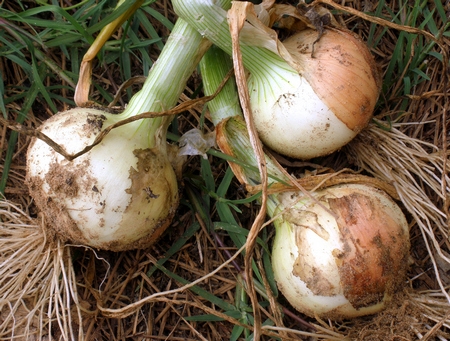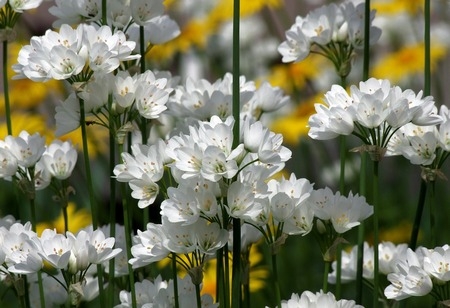- Author: Help Desk Team
A great way to get a head start on your spring and summer vegetable garden!
The seeds of many vegetable plants can be planted indoors several weeks before the usual outdoor planting date. In addition to the bonus of earlier harvest times, your young plants are protected at their most vulnerable stage from inclement weather and the hungry pests that love to feast on small, tender vegetable plants. Planting from seed also gives you access to a much wider variety of vegetables than you would get when purchasing seedlings from local nurseries or big box stores.
Most of us are not lucky enough to have a heated greenhouse or cold fame. Despite that, you can have success starting seeds indoors as long as you provide the conditions they need to germinate and grow. Here are some tips for successful indoor seed starting:
· Purchase your seeds from a trusted source. Fresher, higher quality seeds will have a higher germination rate (meaning more will sprout). Know your local climate zone and last frost dates and choose varieties that are appropriate for your area.
· Some vegetables do best when their seeds are planted directly into the garden. Peas, beans, and most root crops such as carrots, beets, and radishes are some of them. Check the information on the backs of seed packets and consult the CCC Vegetable Planting Guide below to find out which of the plants you wish to grow can be started early, and those that should be directly seeded in the garden.
· Time your seed planting. Not all vegetable plants grow at the same rate. From seeding to planting in the garden, tomato plants can take 5–8 weeks, while cucumbers or melons take 3–4 weeks. Plan your seed planting so that your plants are ready to go outside when the soil and air temperatures are sufficiently warmed up. A good rule of thumb is to wait to transplant outdoors when nighttime temperatures are consistently above 50°F. For more information on the timing of planting, check the backs of seed packets and the CCC vegetable planting guides provided below.
· Use a seed-starting mix. These mixes don't contain any actual soil, but they provide ideal conditions for sprouting seeds. Most importantly, they provide a good balance of drainage and water-holding capacity. Soilless mixes commonly contain some combination of these materials: peat moss, sphagnum moss, perlite, and vermiculite. Don't use garden soil as it doesn't drain well and may harbor plant diseases.
· Container choices. A wide variety of containers can be used- just make sure they are at least 2 inches deep. Recycled containers such as empty plastic yogurt or takeout containers work well. Make sure to poke holes in the bottom that will allow excess water to drain out. Used plastic plant pots, six-packs and flats are good choices and can be reused for many years but should be sanitized before reuse.
· Sanitizing previously planted containers. Remove all soil and debris by scraping, brushing, and rinsing. Use a solution of 9 parts water and 1 part bleach to kill any possible plant pathogens. Soak plastic and other non-porous containers in a bucket of this solution for 10 minutes. Porous containers such as terra cotta should be soaked for 3 hours to overnight. Rinse thoroughly and allow to dry before using.
· Plant seeds at the proper depth. Check the seed packet for planting depth recommendations. You don't need to be too precise, just be sure not to plant any deeper than the directions suggest. The general rule is to plant the seed two to three times as deep as the seed is wide. For example, large seeds like beans should be sown about an inch deep, and very tiny seeds should be barely covered by the soil mix. Tamp down the soil very gently after planting and water right away to thoroughly moisten the soil (until excess water runs out of the drain holes). You will not always get 100% germination, so plant a few extra seeds.
· Don't forget to label all your containers. Do this before or while you are planting your seeds. Use materials that will stand up to wet conditions. Pencil on plastic or wooden stakes will work well.
· After sowing, set the containers in a warm location. Most vegetables germinate best at temperatures between 65° and 75°F. A warm location in your home is one option. Another is to invest in an electric heat mat. They are made specifically for starting seeds and growing indoors, are an excellent way to provide consistent warmth, and will last for many seasons. Find heat mats online or at local garden shops and nurseries.
· Keep the seed-starting mix moist, but not soggy. Plant roots need both air and water. Saturated soil can cause seeds to rot and seedlings to die. Also do not allow soil to dry out. Check daily and water as needed. Clear plastic dome covers or plastic bags (be sure to keep them from touching the soil surface) can be used to help keep the soil evenly moist. Remove the covers after germination to allow for air circulation and to help avoid fungal diseases.
· As soon as seedlings emerge, make sure they get bright light. Placing them next to a sunny window is an option, but containers will need to be turned occasionally to keep the plants growing straight. Better results can be obtained by providing additional light from 40-watt cool white fluorescent tubes. Suspend the lights about 4¬–6 inches over the tops of the plants and keep them on for 14–16 hours each day. Be sure to move the lights higher as the plants grow taller.
· When the seedlings have one or two sets of true leaves, it's time to thin and transplant. If planted in individual pots, you will want to remove all but one seedling per pot. Cut or pinch extra seedlings off at the soil line. If several seeds are planted in flats or small cell packs this is the time to transplant them into larger individual pots. Four inch or quart size containers will give seedlings enough room to grow until it is time to plant in the garden.
· Begin to fertilize weekly. Plants that remain in the seed starting mix will now need added nutrients. When your seedlings have one set of true leaves (see illustration below), use a half-strength fertilizer (liquid fertilizers are easier to use and apply). Organic mixed fertilizers are a good choice. Many of them will provide a range of nutrients that include micronutrients. You may decide to transplant your seedlings into a potting mix that already contains added nutrients, in this case adding fertilizers may not be necessary.
· Be sure to see our upcoming blog posts- on March 6th the blog will provide tips for preparing to grow healthy tomatoes at home, and the March 20th post will be on transplanting your vegetable seedlings into the garden.



Illustration and photos courtesy of S. Hoyer
Seed Sources:
https://sonomamg.ucanr.edu/files/29795.pdf
Vegetable planting guides:
Contra Costa County Vegetable Planting Guide-Interior Regions
Contra Costa County Vegetable Planting Guide-Coastal Regions
Climate zones and last frost dates:
https://cagardenweb.ucanr.edu/Your_Climate_Zone
Local Frost Dates for Garden Planning
More information on vegetable gardening can be found in the links below:
https://cagardenweb.ucanr.edu/Vegetables/
Vegetable Gardening Handbook for Beginners
Help Desk of the UC Master Gardeners of Contra Costa County (SMH)
- Author: Help Desk Team
If you've been frustrated when growing onions because the plants produce flower stalks instead of bulbs, it is time to try again. In our Contra Costa County climate, when onions are started in the fall, it is not unusual for them to flower the following spring. After flowering, the onion plants cannot produce a good bulb for harvest. To avoid this result, plant your onions in February.
Onions are biennial plants meaning that they should grow for two years before flowers develop to produce seeds. To understand why premature flowering occurs for onions planted in the fall in our climate, it is helpful to understand two aspects of onion growth—the requirement for long periods of daylight for bulb production and vernalization which is exposure to cold temperatures that triggers flower production.
Depending on the variety, onions need between twelve and sixteen hours of daylight to produce bulbs. Contra Costa County has twelve hours of daylight by early April and about fourteen hours and forty-five minutes of daylight by late June. Consequently, depending on the onion variety, bulbs will not start to develop until late spring or early summer.
Vernalization is a botanical process that induces a plant's flowering production to occur following exposure to cold temperatures. When onions are planted in the garden in the fall in our climate, they can mature quickly. If onion stalks have grown to at least the size of a pencil while fall temperatures remain warm and are then exposed to cold nighttime temperatures in December or January, vernalization occurs. When temperatures begin to warm in early spring, flower production is triggered. Since daylight hours are still too short to produce bulbs before flowers form, the result is an onion plant that grows flowers but will never produce a bulb.
Try planting your onions in February to avoid vernalization. In our climate, if seedlings are planted in February, they are unlikely to encounter nighttime temperatures cold enough to induce vernalization. Without vernalization, flowers will not develop prematurely and good size bulbs can develop as soon as there are sufficient daylight hours.
When starting onions in February, it is best to transplant seedlings into the garden bed rather than placing seeds directly into bed. Using seedlings makes it more likely that the plants will mature sufficiently to allow bulbs to form as soon as daylight hours are sufficiently long.
If you want to plant your own seeds, start them indoors in December so that the seedlings are ready for transplant by February. Keep in mind that onion seeds only remain fully viable for one or two years so always use fresh seeds. If you haven't yet started your own onion seedlings, look for them in local nurseries.
Avoid using onion sets if you want onion bulbs. Onion sets are small onion bulbs that grew the prior season and were harvested and allowed to dry. When you plant them, the plant that grows will be in its second year of growth and will be ready to produce flowers even without vernalization from cold temperatures.
This video produced by the UC Master Gardeners Program in Santa Clara County shows how to transplant onion seedlings into the garden and explains how to harvest the mature onion bulbs: https://www.youtube.com/watch?v=Gb1WhqtsdMI.
For additional cultural tips for onion production, see this UC website: https://ipm.ucanr.edu/home-and-landscape/onions-and-garlic/cultural-tips/index.html?src=307-pageViewHLS
This UC website will help you manage onion pests and diseases: https://ipm.ucanr.edu/home-and-landscape/onions-and-garlic/index.html
Help Desk of the UC Master Gardeners of Contra Costa County (TKL)
- Author: Help Desk Team
Are you noticing that the leaves on your citrus trees are looking yellow, and wondering if now is the time to fertilize? We have some answers for you.

Should You Fertilize Now?
First of all, don't be too worried about the yellow leaves. The yellowing, especially the yellowing of the leaf veins, is related to a lack of nitrogen. Citrus leaves are frequently yellow in the winter due to the trees' inability to take up nitrogen in cold weather. But now, as the days get longer and the soil begins to warm, the trees are getting ready to pick up nitrogen from the soil which means we are getting closer to the start of the citrus tree fertilization process.
Citrus trees are typically fertilized at three points in the year. The first is in January or February just before the trees begin to bloom. Exactly when will depend on your microclimate and the trees' readiness. Given the climate differences In Contra Costa County, in west county, you may need to apply the first fertilizer in late January, while the trees in central and east county may not be ready until mid- to late-February.
The next application time is in May, with a third application in June if necessary. And that is it for the season. Avoid fertilizing any later in the year, since late-season fertilization can have adverse effects on the fruits, including reduced fruit quality, delayed fruit coloring, and rough rinds. Late-season fertilization can also cause off-season growth making the trees more susceptible to diseases, disorders, and pests. Frost damage and leaf miner infestations are two common problems with late-season fertilization.
What Kind of Fertilizer Should You Apply?
Nitrogen is the main nutrient that you need to provide. Contra Costa soils are typically deficient in nitrogen and citrus trees are heavy nitrogen users. There are many sources of nitrogen. An easy choice for the home gardener is an organic citrus fertilizer. Fertilizers are labeled with three numbers on the front of the package, indicating percentages of N (nitrogen), P (phosphorous) and K (potassium). Look for a fertilizer where the first number (nitrogen) is the highest of the three, e.g., 7-3-3.
Citrus can also suffer from micronutrient deficiencies including zinc or iron. Most organic fertilizers contain these micronutrients, but if the leaves on your citrus have yellow patches between green veins you may need to correct these deficiencies by applying a foliar application of a liquid chelated micronutrient solution as the new growth emerges in the spring.
You can check here on the signs of different nutrient deficiencies to get an idea of what you are dealing with: https://ipm.ucanr.edu/PMG/C107/m107bpleaftwigdis.html
No matter which product you are applying, make sure that you carefully follow all label directions on the amounts and timing of the fertilizer application. Avoid over fertilizing which can cause excessive new growth, making the trees susceptible to other disorders such as bacterial blast.
Micronutrient deficiencies can also occur if the soil is too acidic or too alkaline. Citrus trees can tolerate a pH in the range of 6.0-7.5, with 6.5 being optimum. Contra Costa soils tend to be on the higher, alkaline side. If you have taken the actions above and are still not seeing the results you want, a soil pH test may be your next step. You can use an off-the-shelf home soil test kit or send a soil sample to a commercial soil test company.
How Should You Apply the Fertilizer?
The fertilizer should be scattered evenly on the soil under the tree's canopy. Make sure that you distribute the fertilizer at least as far out as the drip line. Avoid the area near the trunk. Lightly scratch the fertilizer into the surface of the soil and then irrigate.
For more information on citrus fertilization, including guidelines on the amount of nitrogen needed based on the age of the tree, see: https://ipm.ucanr.edu/PMG/GARDEN/FRUIT/CULTURAL/citfertilization.html
For a full set of tips on growing citrus, see: http://ipm.ucanr.edu/PMG/GARDEN/FRUIT/citrus.html
We wish you the best with your citrus trees. Proper fertilization and care should provide you with healthy trees and tasty fruit.

Help Desk of the UC Master Gardener Program of Contra Costa County (ECS)
- Author: Help Desk Team
Master Gardeners have many clients whose gardens need work beyond the standard mowing, leaf blowing and hedge trimming, such as a new design, nursing an older garden back to health, improving existing irrigation, or doing heavier chores. Since the Contra Costa Master Gardener organization does not make site visits nor perform garden maintenance, our goal is to provide you with options to help you find what you need.
Prior to starting your search for garden assistance, take the time to clearly define the entire scope of your project. Knowing exactly what you need from someone will help to assure that you find the best fit.
Depending on the type of help you desire and the scope of your project, online organizations maintain lists of qualified professionals you can call. Many of the following resource organizations have professionals who are qualified to help with more than just one aspect of garden development and care.
Rescape California is a San Francisco Bay Area nonprofit organization that promotes sustainable landscaping. Qualified landscape professionals must complete a comprehensive training program and use sustainable practices.
https://rescape.memberclicks.net/directory
California Landscape Contractors Association (CLCA) is a nonprofit trade organization of licensed landscape and landscape-related contractors and professionals
https://www.clca.org/find-a-contractor/
Bringing Back the Natives Garden Tour is a local (Alameda & Contra Costa Counties) organization that seeks to educate and encourage the use of California native plants in home gardens. The organization provides contact information for landscape professionals whose gardens have been featured in the annual tours.
https://www.bringingbackthenatives.net/find-a-designer
Association of Professional Landscape Designers (APLD) is an organization that “encourages all members to adhere to a code of professional standards, to actively participate in continuing education, and to be current with state-of-the-art developments and trends throughout the field”.
https://www.apld.org/
American Society of Landscape Architects (ASLA) is the national professional association for landscape architects. Landscape architects typically hold a degree in landscape architecture, covering a broad range including design, planning, grading and drainage, construction, and horticulture.
https://my.asla.org/my-asla/directories/firm_search.aspx
Qualified Water Efficient Landscaper (QWEL) graduates have been trained in water-wise landscape practices including plant selection, irrigation system design and water management. QWEL maintains an online list of certified professionals in the East Bay. While the website lists all professionals under the category of non-residential, many perform residential services.
https://www.qwel.net/map
International Society of Arboriculture (ISA) has a searchable database of certified arborists who are professional tree care providers knowledgeable in the care needed to sustain a tree's life. Their website also has resources showing how to properly care for trees in the urban environment.
https://www.treesaregood.org
And of course, you can ask friends and family for recommendations. Social media such as Nextdoor are also a good place to ask your neighbors.
If you know the maintenance requirements of plants in your yard, you may feel more comfortable hiring someone less skilled to whom you can provide direction. If you know the name of your plant, search the internet for the care it requires. Focus on resources that are reliable like nurseries, growers, horticultural organizations, and, of course, Master Gardeners.
Before you hire someone, contact several potential companies or individuals to ascertain their skills, scope of work, and price before deciding. Check for their business license and proof of insurance as well.
Help Desk of the UC Master Gardener Program of Contra Costa County (SEH)
- Author: Help Desk Team
Winter is an ideal time to plant a fruit tree. Although it requires some patience, success is best using bare root trees. There are many advantages: the trees are lighter and easier to handle; you can get a good look at the roots; they cost less than leafed-out potted trees; the tree is dormant and less apt to be stressed by handling; and the roots don't have to adapt again to new soil. The main disadvantage is that you should get the tree in the ground within a few days after purchase, and it may take 2–3 years before some trees produce fruit.
Fruit trees are an investment and deserve some thoughtfulness to ensure you plant the right tree (appropriate for your climate zone) in the right location (good drainage, minimum 6 hours sun per day). Digging the planting hole before buying the tree will let you check for drainage and an adequate amount (2–3 feet deep minimum) of soil. Here is a website showing how to test soil including drainage: https://marinmg.ucanr.edu/BASICS/SOIL_813/evaluate/
Selecting a healthy bare root tree is critical to get your investment off to a good start. Buy your tree from a reputable nursery that has a wide selection. You don't want a tree with roots that have been in a container too long. These roots may be kinked and will look like they are circling the root ball. These roots tend not to spread and that deprives your tree of needed nutrients.
When preparing the hole for your tree, follow the steps as described in the article linked below to give the roots room to spread and to prevent the graft site from sinking below soil level. Backfill with native soil. As you can see from the diagram below, most of the root ball should be above the original soil level to avoid crown rot. The tree will also settle.
And unless you want a huge tree with more fruit than most families could possibly eat, prune the trunk back to about knee height after planting. This takes some courage, but your tree will reward you with plenty of fruit that is easy to reach. Wait until the weather will be dry for at least several weeks to prune apricots, apriums, and cherries.
Other considerations are pollination requirements, ultimate tree size, chill hours, and disease susceptibility. Pollination is necessary for good fruit production. Some fruit trees have flowers with both male (anthers) and female (pistils) organs and can self-pollinate, such as persimmons and Bartlett pears. Other trees have flowers with both male and female organs but cannot self-pollinate and will require a second tree planted within 100 feet for fruit production, such as many apple varieties and Asian pears. Still others have separate male and female flowers.
Deciduous fruit and nut trees require a certain number of “chill hours” below 45°F to produce. It is important to select only varieties that have chill hour requirements equal to or lesser than the chill hours listed for your area. This reference discusses chill hours and has links to fruit tree requirements for Contra Costa County: https://ccmg.ucanr.edu/files/77176.pdf
It's important to know which diseases and pests a particular fruit tree is susceptible to. For example, apricots and their crosses such as aprium and pluot are prone to infection by the Eutypa fungus and unlike most deciduous trees, should be pruned in late summer before the weather gets damp. Check the reference below. These references have links and information regarding fertilization, pollination, pests and diseases, and characteristics of various fruit trees.
Despite our recent rains, we are still in a drought. Most fruit trees need substantial amounts of water to become established and as they mature and produce fruit. This link has information about drought tolerant fruit trees, shrubs and vines: https://crfg.org/wp-content/uploads/Drought-Tolerant-Fruiting-Trees-Shrubs-and-Vines-Presentation.pdf
Articles with step-by-step planting guides:
• https://sonomamg.ucanr.edu/Food_Gardening/Additional_KG_Articles/Planting_Bare-root_Fruit_Trees/
• https://ucanr.edu/blogs/blogcore/postdetail.cfm?postnum=46072
• https://ucanr.edu/blogs/blogcore/postdetail.cfm?postnum=38836
Excellent video with step-by-step planting guide (UC does not recommend any particular business but this nursery has good videos and does not advertise its products):
• https://www.youtube.com/watch?v=fP-2TGlNo50
More information:
• The Big Picture: https://homeorchard.ucanr.edu/
• Fruit trees for Contra Costa County – great reference to help you decide what to buy, and a pollinating guide: https://ucanr.edu/sites/ccmg/files/228958.pdf
• Fruit tree pests and diseases: http://ipm.ucanr.edu/PMG/GARDEN/fruit.html
Help Desk of the UC Master Gardener Program of Contra Costa County (EAS)




